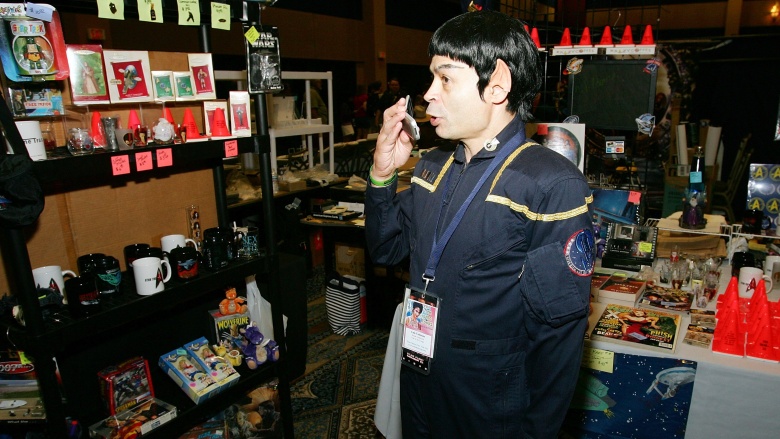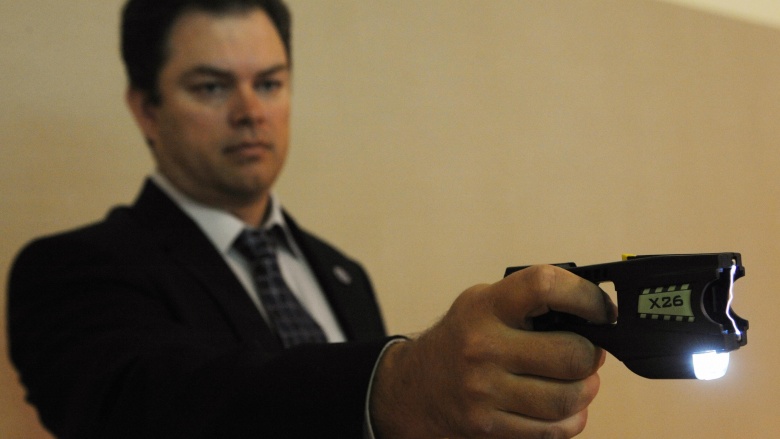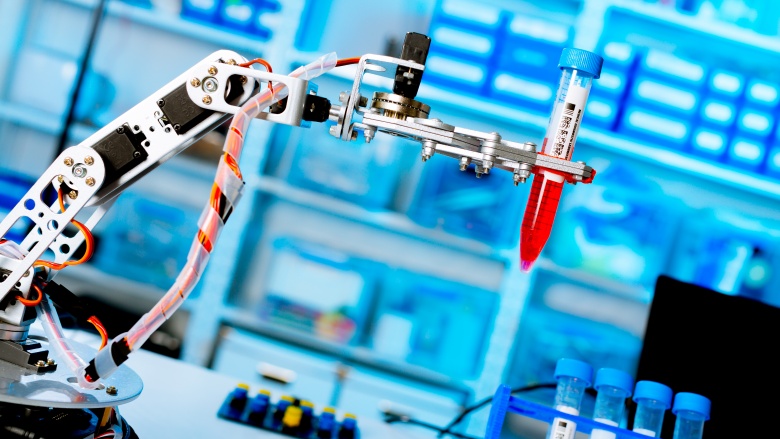Real Inventions Inspired By Science Fiction
Next time you head to the theater to take in a science fiction movie like Interstellar, Star Trek, or Star Wars, pay close attention. Not to the plot or acting or any of that nonsense, of course. No, you should pay attention to the technology imagined in these fantastic and futuristic universes, because some day soon, those ideas may become a reality. That's because science fiction has a long history of inspiring people to create many of the amazing inventions that have shaped and defined our world and the way we live our daily lives.
The internet
Yes, the invention that defines the modern age, and which allows you the intense joy of reading this article, was directly inspired by a science fiction story. The story in question? Arthur C. Clarke's "Dial F for Frankenstein," which was published in the pages of Playboy in 1964. A nine-year-old kid named Tim Berners-Lee got a hold of the issue and actually read the articles, just like everyone always claimed they were doing. He was entranced by Clarke's tale of a series of computers that became interconnected, learned to communicate with each other, and eventually became sentient. Inspired by the idea, Berners-Lee dedicated his life to making it possible, and eventually developed the earliest versions of the World Wide Web, aka the Internet. Let's just hope, for our sakes, that the sentient part of Mr. Clarke's story remains untrue.
Cell phones
If there's any invention that rivals the internet in importance to modern society, it's the cell phone. It's honestly hard now to remember the way the world was without them. Even harder? Coming up with the idea for cell phones in the first place. But Martin Cooper did exactly that after watching an episode of Star Trek. Inspired by the flip communicators that Captain Kirk and his crew used during an away mission, Cooper began working on a portable phone. In 1973, he built the first prototype of what would eventually become the cell phone, boldly going where no one had gone before.
Credit cards
In the real world, the first credit cards appeared in the 1920's and 1930's. In the world of science fiction, though, they didn't come about until the year 2000. That's because the term "credit cards" first appeared in Edward Bellamy's seminal sci-fi novel Looking Backward: 2000-1887, which imagined a future utopia where conveniences like credit cards were commonplace. Though the book is mostly forgotten now, it was hugely influential at the time, inspiring the creation of Looking Backward clubs and societies, where readers debated the ideas from the book. Too bad they didn't figure out credit fraud and identity theft too!
TASERs
Ever wonder what the acronym TASER stands for? Did you even realize TASER is an acronym? Well, don't worry about it, because we have the answer right here: it's short for Thomas A. Swift's Electric Rifle. See, the young adult novel Tom Swift and His Electric Rifle—about a guy who, you know, invents an electric rifle—was a childhood favorite of NASA researcher Jack Cover, who began developing the TASER in 1969. When he completed it in 1974, he named it after his inspiration.
Robots
Robots: our future overlords since 1920. Oh sure, a century ago we didn't even come close to having the technology needed to actually make robots. But we could certainly imagine them. In fact, the word "robot" itself was introduced to the English language thanks to the 1920 play R.U.R., or Rossum's Universal Robots, by Czech author Karel Čapek. The play imagines a kind of artificial person who can be used as free, safe labor. Of course, these robots eventually become sentient and rebel against their human overlords. So not only did the play inspire the creation of actual robots, it also inspired a hundred years of every single movie, book, and television show ripping off the exact same plot.
Rockets
Where would we be without rockets? Answer: still here on Earth, instead of out exploring the cosmos. We can thank the combined might of scientist Robert Goddard and sci-fi legend H.G. Wells for our space exploration. Inspired by Wells's classic story The War of the Worlds, Goddard set about trying to create a rocket powerful enough to enable space flight. In 1926, he launched the world's first first liquid fuel rocket, and his research became the foundation for all modern rocketry to follow.
Manipulator arms
If you're like us, you think manipulator arms are about the coolest thing ever invented. Hey, we're science geeks, okay? For those drawing a blank, manipulator arms are those robotic limbs used to remotely pick up dangerous or hazardous materials. Many old timers still refer to manipulator arms as "waldos" for a very simple reason: the manipulator arm was invented after sci-fi icon Robert A. Heinlein described the device in his 1942 short story "Waldo." Within a couple years, waldos were in general use, and today have been adapted for all sorts of purposes, up to and including controlling Muppets. Thank you, Robert Heinlein, if for nothing else, then for Miss Piggy.
Atomic power
Finally, let's chalk up another innovation to the mind of H.G. Wells: atomic power. Of course, atomic power doesn't exactly have the best track record, but you can't blame Wells for that. After all, he merely came up with the idea for atomic energy in his 1913 novel The World Set Free. Nearly two decades later, in 1932, scientist Leo Szilard read the book and was immediately inspired to create what Wells had dreamed up. A year later, he figured out how to create a nuclear reaction, and by the end of the decade, he was pioneering research into another new invention conceived of by Wells in The World Set Free: the atomic bomb. Hey, you win some, you lose some.








